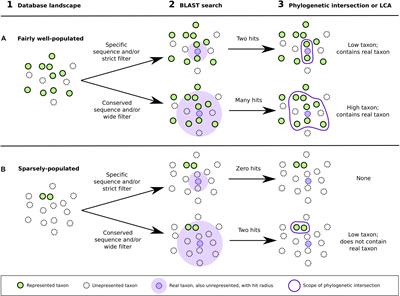Public Channels
- # 2022-summerschool-introtometagenomics
- # 2023-summerschool-introtometagenomics
- # 2024-acad-aedna-workshop
- # 2024-summerschool-introtometagenomics
- # amdirt-dev
- # analysis-comparison-challenge
- # analysis-reproducibility
- # ancient-metagenomics-labs
- # ancient-microbial-genomics
- # ancient-microbiomes
- # ancientmetagenomedir
- # ancientmetagenomedir-c14-extension
- # authentication-standards
- # benchmark-datasets
- # classifier-committee
- # datasharing
- # de-novo-assembly
- # dir-environmental
- # dir-host-metagenome
- # dir-single-genome
- # eaa-2024-rome
- # early-career-funding-opportunities
- # espaamñol
- # events
- # general
- # it-crowd
- # jobs
- # lab-community
- # lactobacillaceae-spaam4
- # little-book-smiley-plots
- # microbial-genomics
- # minas-environmental
- # minas-metadata-standards
- # minas-microbiome
- # minas-pathogen
- # no-stupid-questions
- # papers
- # random
- # sampling
- # scr-protocol
- # seda-dna
- # spaam-across-the-pond
- # spaam-bingo
- # spaam-blog
- # spaam-ethics
- # spaam-pets
- # spaam-turkish
- # spaam-tv
- # spaam2-open
- # spaam3-open
- # spaam4-open
- # spaam5-open
- # spaam5-organizers
- # spaamfic
- # spaamghetti
- # spaamtisch
- # wetlab_protocols
Private Channels
Direct Messages
Group Direct Messages
@James Fellows Yates has joined the channel
@Linda Armbrecht has joined the channel
@Sterling Wright has joined the channel
Hi all! I was hoping I could ask a question about studying plants in paleofeces and sedimental DNA. For context, my samples are an assortment of coprolites and mixed coprolite and sediment from the Pleistocene-Holocene transition, in a cave Southern Chile. I shotgun-sequenced the libraries, and so far have run them through kraken2 and bracken, but I will also try an alignment-based taxonomic classification method in the future. For now, I'm using the kraken pipeline to get an overview of what's there at a broader taxonomic level. I'm currently filtering the raw data prior to analysis, but once that's done I will merge the taxonomic hits to a higher taxonomic level, probably family. I'm trying to filter out known plant contaminants from my taxonomic classification, but I'm not really sure what to do beyond removing main crop species like wheat, maize and rice. I do have some lists of plants in the various eco-regions around my site and previously manually worked through all the taxonomic hits to see if it was possible for the genera to be present in the area. Is there a better way to do this? And how strict do you tend to be when you find a hit that makes no sense - remove it entirely? Remove it if it doesn't pass a threshold of number of hits in your samples? Hope this isn't too silly a question - I'm pretty new to metagenomics and seda/paleofeces work, so I'm not certain how to proceed at all times.
Hi @Maria Zicos, Recommend applying @Becky Cribdon’s PIA approach for this. It is conservative, but should weed out most of the spurious hits. https://www.frontiersin.org/articles/10.3389/fevo.2020.00084/full

*Thread Reply:* Hi Pete! Thanks for the advice! I was chatting with @Becky Cribdon about this also and she told me about PIA. Looking forward to trying it.
*Thread Reply:* Personally, I also completely remove taxa that make no sense, although after PIA the numbers of reads assigned to these taxa should be very small. We work with Holocene samples from the North Sea (so relatively recent) and decided that, to make sense, a taxon should be native to Europe today.
What makes sense is always going to be arbitrary, but we erred on the side of accepting taxa to try and minimise that.
@Lennart Schreiber has joined the channel
@Laura Carrillo Olivas has joined the channel
@Jordan Von Eggers has joined the channel
@Coralie Raffort has joined the channel
@Benjamin Vernot has joined the channel
Hi all - I'm trying to find examples of people looking for / finding invertebrate DNA from ancient sediments. Lake sediments, for example, to find daphnia or some other invertebrate that might live in the lake. I haven't had much luck with my searches, and I'm not sure if I'm missing something, or if it's just not been done. Any suggestions?
Separately: if one wanted to search for invertebrate DNA in e.g. shotgun data from ancient sediments, do you have suggestions on where to start? We use kraken for classifying mammalian aDNA, so my first instinct would be to start there.
Hi @Benjamin Vernot, here is a recent paper on Daphnia in sediments:
Tsugeki, N., Nakane, K., Doi, H., Ochi, N., & Kuwae, M. (2022). Reconstruction of 100-year dynamics in Daphnia spawning activity revealed by sedimentary DNA. Scientific Reports, 12(1), 1–11. https://doi.org/10.1038/s41598-021-03899-0
I am also interested in looking for zooplankton/invertebrates in lake sediments and from what I’ve found so far, zooplankton seem to be a tricky target since for some groups (cladocerans) metabarcoding can be difficult because of different size DNA regions. I am sure others in this society have more information and there is some mention in this review paper as well:
Capo, E., Giguet-Covex, C., Rouillard, A., Nota, K., Heintzman, P. D., Vuillemin, A., … Parducci, L. (2021). Lake Sedimentary DNA Research on Past Terrestrial and Aquatic Biodiversity: Overview and Recommendations. Quaternary, 4(1), 6. https://doi.org/10.3390/quat4010006

Hi @Benjamin Vernot I am not expert in zooplankton but what I understood is that the genome of Daphnia sp differ so much between species and with other zooplankton (not only in nucleotide content but also in length between conserved regions for taxo genes" that is it highly difficult to succesfully get such signal from sediments.
You could send a email to the society mailing list for this question, there are probably few groups working on that currently
Thanks @Jordan Von Eggers for the references! Those are super helpful. It seems like barcoding might not work, as you say. I'm still curious if we can detect them in shotgun data. If not, we do non-PCR targeted capture, which might work, but it's expensive and time consuming. Have you tried anything in particular?
Another thing I hadn't considered is variable preservation due to behavior of the organisms - it seemed like in the Daphnia paper you sent they found the most DNA when they were laying lots of eggs, and not so much DNA at other times. And then you could imagine different "containers" of DNA would preserve differently across time. What time periods are you looking at?
@Eric Capo, I'm also checking out your review (not sure how I missed it before), and good idea to write to the mailing list.
Narumi Tsugeki is also one of my collaborators, you can contact her using my name if you wish. She is very nice